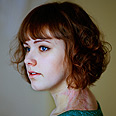
Norway massacre survivor 'no longer afraid of death'
Andrea Gjestvang's astonishing series of photographs captures survivors of Utoya massacre, seeking to represent voices remaining unheard amid legal, political discourses on tragedy
VIDEO - Not every scar is visible to the eye: There is no trace of the carnage in the image of a girl taking in the sumptuous Norwegian landscape. The look in the eyes of the girl huddled with her dogs is one of deep sadness. Looking at the photo of the chestnut-haired girl the eye is drawn to her deep blue eyes, to only later drift to the scarring on her neck.
These are some of the haunting images taken by Norwegian photographer Andrea Gjestvang, who documented the recovery of dozens of young survivors of the massacre on the Norwegian island of Utoya two years ago. She told Ynet of the silence behind the camera.
On the Thursday of July 22, 2011, Gjestvang, 32, was in her Oslo office, about to leave for the weekend, when an explosion shook the building. She fled down the stairs, making her way to the site of the explosion, stumbling upon a scene so abnormal in Norway: Eight bodies sprawled on the ground in the aftermath of a terror attack. Yet this was only the beginning.
Anders Behring Breivik, a far right fanatic, having detonated an explosive at the Norwegian capital, went on to perpetrate a mass shooting at the island of Utoya, the site of the Workers' Youth League (AUF)-run summer camp. His killing spree claimed 69 lives before police detained him.
Some 500 youths survived the murderous rampage. Many of them were injured.
Six months later, Gjestvang began recording 25 survivors' paths to recovery. She compiled the pictures and testimonies into a book entitled "A Day in History" ("En Dag I Historien"), which came out in 2012. It became the recipient of the L'Iris d'Or at the 2013 Sony World Photography Awards, ahead of some 62,000 contenders.
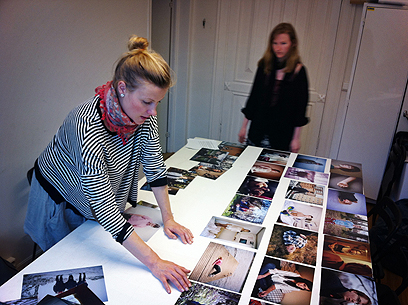
Andrea Gjestvang (Photo: Courtesy)
Gjestvang selected the portrait of 15-year-old Ylva Schwenke for the book's cover, describing it as one of the most important in the collection due to its powerful symbolism. "Ylva is young and beautiful, looking seemingly into the future while bearing a big scar on her neck. She is looking as though into the future while bearing history on her shoulders."

'I bear my scars with dignity, because I got them standing for something I believe in,' says 15-year-old Ylva Schwenke (Photo: Andrea Gjestvang/ MOMENT)
Some of the photos show no scars, such as that of Iselin Rose, captured sprawled amid her canines. "I love this picture," Gjestvang says. "It says a lot without saying everything. You can read between the lines. Iselin said that for a long time she was surrounded by love and support but was not able to give back, to provide protection. Now she feels she can be something other than a victim."
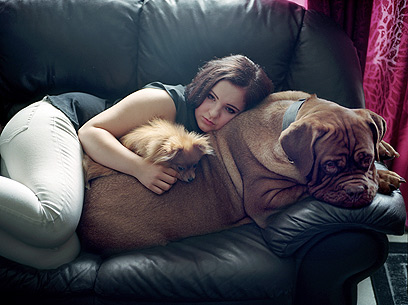
'In the period after Utoya I had a really hard time sleeping,' says Iselin Rose, 15. 'I was afraid of the dark and suffered from dreadful nightmares. My mom and I decided that getting a dog might help me, so I got Athene. Now she sleeps on top of my belly every night' (Photo: Andrea Gjestvang/ MOMENT)
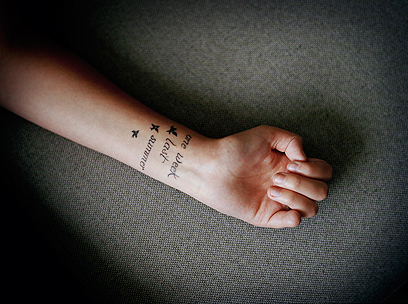
'One week last summer,' reads the tattoo on the arm of Hanne Hesto Ness, who lost her little finger (Photo: Andrea Gjestvang/ MOMENT)
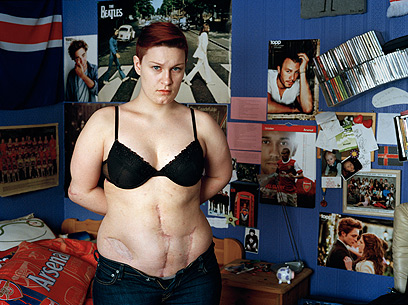
Eirin Kristin Kjær, 20. 'I was certain I would bleed to death. But I wasn't afraid, death seemed like the easy way out. After Utoya, I'm no longer afraid of death' (Photo: Andrea Gjestvang/ MOMENT)
The project's title is in fact misleading. The photos reveal nothing about the fateful day in Norway's history, the most devastating act of violence the country has known since WWII. Gjestvang says she sought to represent the voices of the survivors, an aspect of the tragedy which she says got somewhat lost amid the discourse on the political aspects of the massacre and the trial of Breivik, who was sentenced to 21 years, the maximum punishment afforded by the Norwegian legal system.
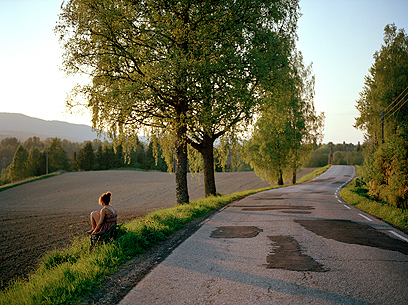
Aina Helgheim, 19: 'I like to sit here, because I feel that my dead friends are in the nature that surrounds us' (Photo: Andrea Gjestvang/MOMENT)
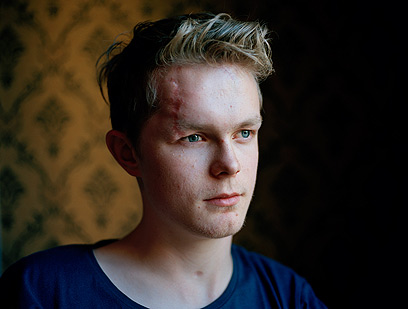
Viljar Hanssen, 18, was shot five times, in the head, left shoulder, left hand and thigh. He became blind on the right eye and had amputated three fingers. In mid-October he returned home from rehabilitation. Viljar was elected to the council in Svalbard in autumn 2011 (Photo: Andrea Gjestvang/MOMENT)
Gjestvant did not choreograph the photographs. Prior to each session she held long conversations with the youths to gather how to photograph them in the most meaningful way. "I asked them to take me to places which were meaningful to them during the therapeutic process."
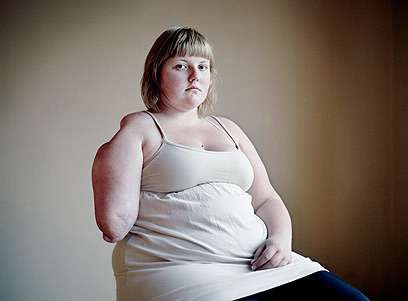
Cecilie Herlovsen, 17, was shot in her arm, shoulder and chin. The last bullet was stopped by her wisdom tooth, probably saving her life. 'My life changed in many ways. In primary school, children used to laugh at me. I was sad and withdrawn. After Utoya I managed to regain myself, to be the real me. Of course there are moments of sadness about what has passed. But in general I'm more positive and social and value life' (Photo: Andrea Gjestvang/ MOMENT)
Having resorted to no photographic effects, Gjestvang says she tried to keep silent and focus on the person in front of her. It was an intense emotional experience.
"I wanted to know how their lives have changed, how they changed. It was important for me to not be a burden for them. I didn't want to push them and it made me anxious. I have reported on many tragedies, but those were very young people from my country. It was an extreme experience, it was very difficult to contain the emotions."
How did the youths react to the sessions?
"They all got the books and the feedback has been positive. I am grateful to have been able to tell their stories, to show the grief and the scars, but also the various forms of the healing process."











